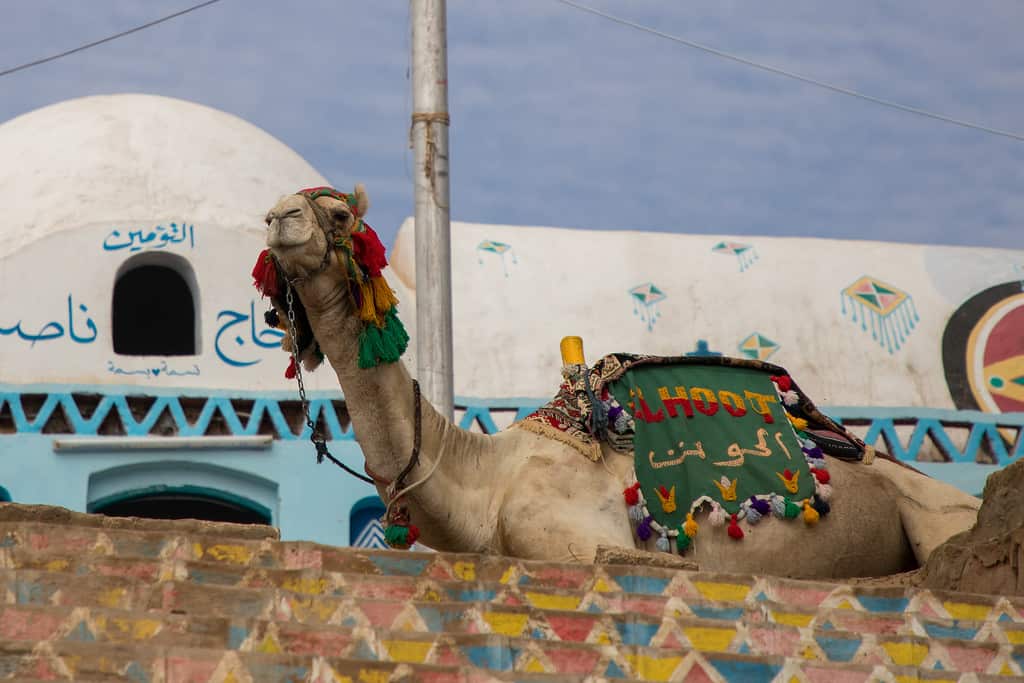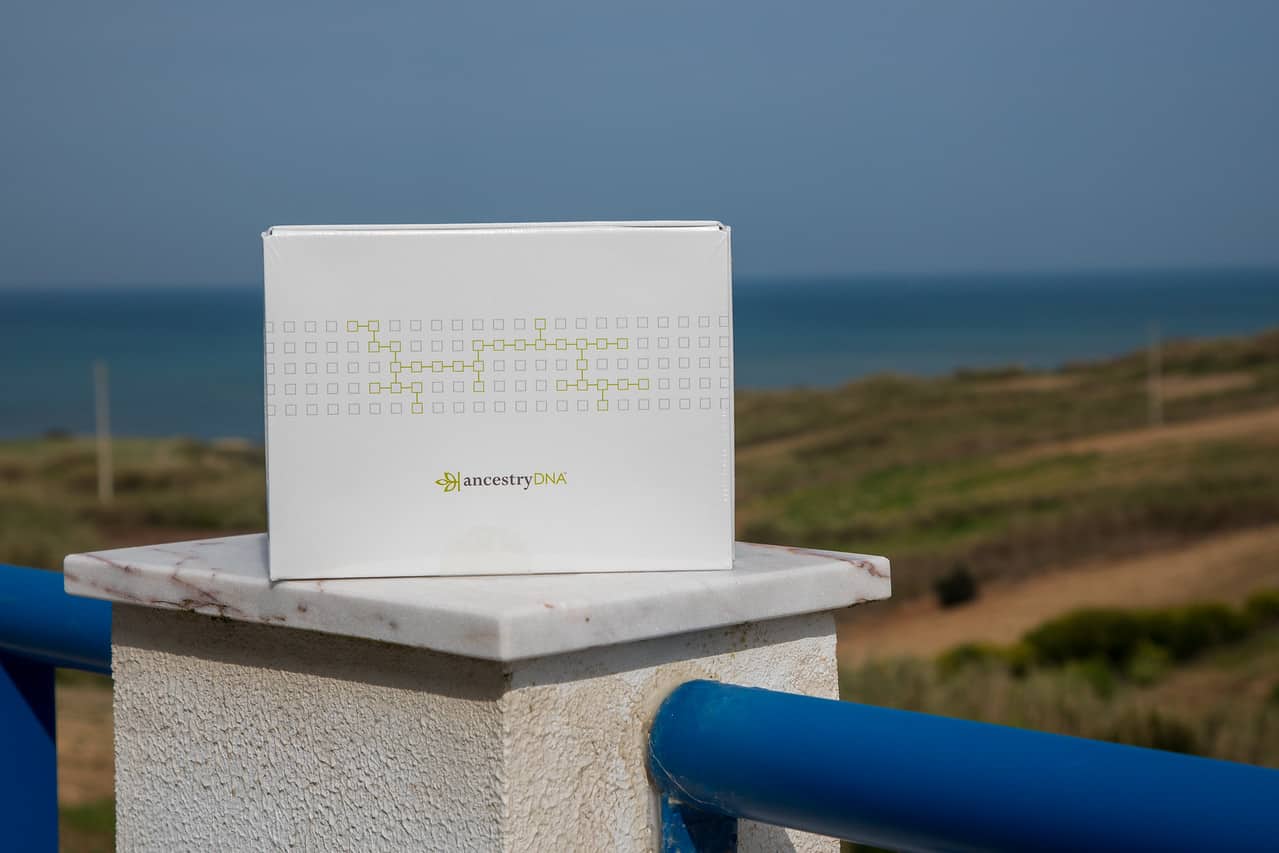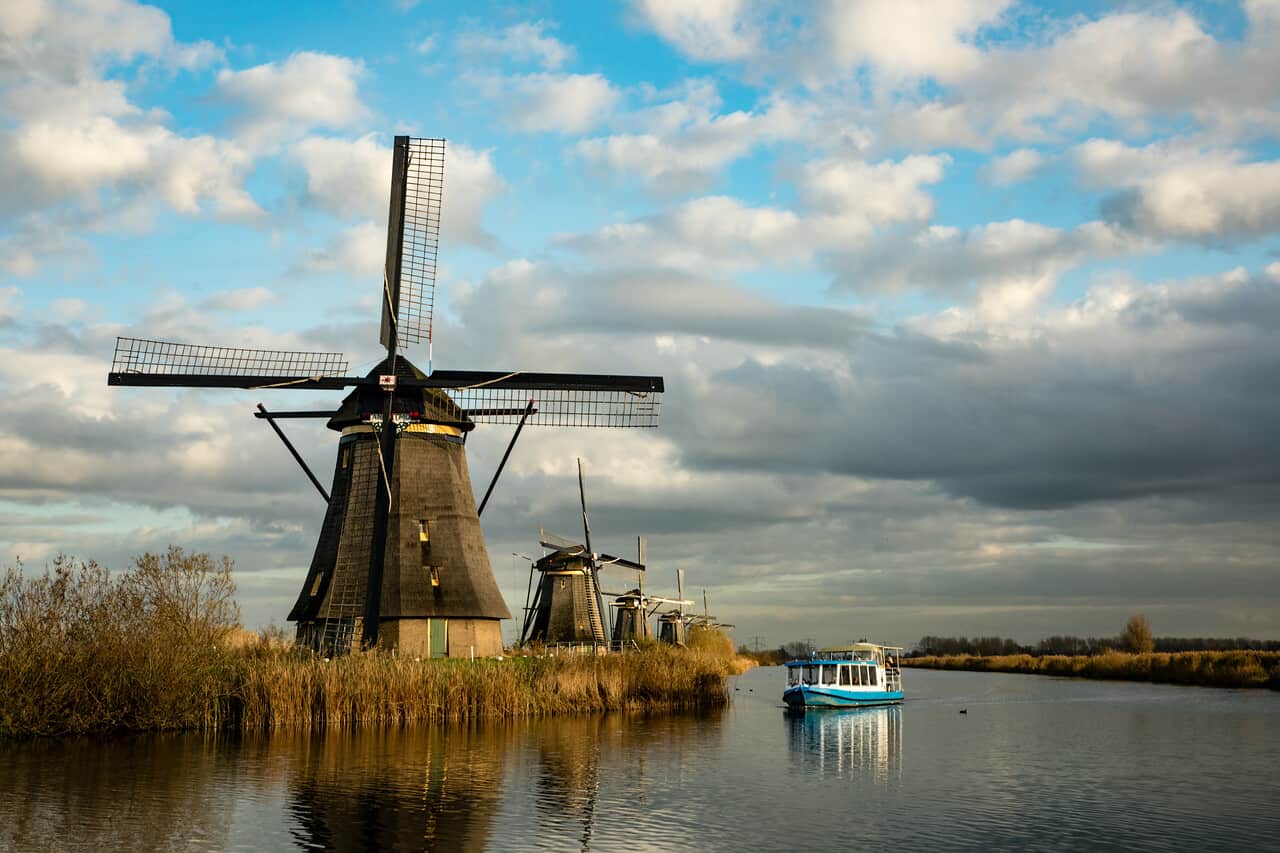Last Updated on March 5, 2023 by Sarah Wilson

All relaxed from our Felucca Cruise on the Nile, we delved back into ancient Egyptian history with a visit to the Temple of Kom Ombo, on the banks of the Nile River. It was astounding how well preserved the temple is, particularly the detail on the murals and the columns, some of which have paint that has lasted for more than 2,000 years.

The original construction of the Temple of Kom Ombo was begun during the Ptolemaic period in 180–47 BC with later additions made during the Egyptian Roman period. You can see evidence of the Greco Roman origins in the designs at the tops of the columns. Kom Ombo is unusual in that it is a double temple, with the southern half of the temple dedicated to Sobek, the crocodile god or fertility, and the northern half dedicated to the falcon god Horus.
There is a small museum on site that has some weird crocodile mummies. Kom Ombo was also believed to be a place of healing, and in the Horus part, our Egyptologist/guide Alam took us to see depictions of ancient surgical instruments carved into the murals. In the modern world, the eye of Horus is often seen as a symbol of healing and restoration.
See also:
- Visiting Herculaneum (Ercolano) Italy with Photos
- Wat Ban Rai Elephant Temple in Thailand
- Nubian Village Visit in Egypt
- Atlas Studios – The Morocco of Hollywood
- One Day in Chefchaouen- Morocco’s Blue City
- Camping in Namibia
- Highlights of Namibia

In Arabic, the word “Kom” means “small hill” and “Ombo,” in ancient Egyptian language means the “gold.” So, Kom Ombo, in ancient languages was called the hill of the gold.

In what seems to be an ongoing theme in Egyptian temples, many of the reliefs inside the Temple of Kom Ombo have been vandalized away by Christians who wanted to use the temple for their purposes but didn’t seem to want to respect the history or culture.

How to get to Kom Ombo Temple
Most people including myself visit Kom Ombo Temple as part of a tour, such as this Edfu And Kom Ombo Temples Private Tour From Luxor, but it is quite easy to visit independently too. The easiest way would be to take a taxi from Aswan or Luxor. It is also possible to take a local bus from Aswan to Luxor which makes a stop at Kom Ombo Temple, as does the tourist train from Cairo to Aswan.
Opening Hours and Entrance Fees for Kom Ombo Temple
Open Daily from 09:00 to 21:00
Tickets to enter Kom Ombo Temple cost 150 Egyptian Pounds (less than $5) . The price of the ticket also includes admission to the Crocodile Museum.
Tips for visiting Kom Ombo Temple
Wear comfortable shoes and brings sunscreen.
If visiting independently, try to arrive just before 9:00 AM or after 4:30 PM to avoid the crowds as this is a favorite stop on the River Nile cruises.
If you visit on a Tuesday or Thursday, you can combine a visit with a camel market in the nearby town of Daraw.
Snacks and refreshments are available but always a good idea to bring some with you.
Disclaimer: Some of the links on this website are “affiliate links”, meaning that if you click on the link and make a purchase, I will receive a small commission at no extra cost. This helps me to keep my website running and continue to share my travelling knowledge with you. I thank you for using the links on my website.






